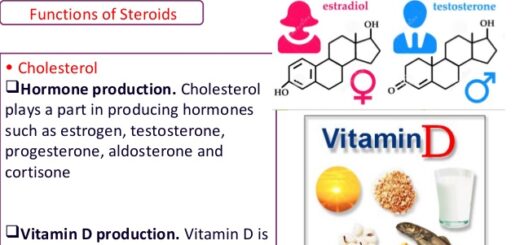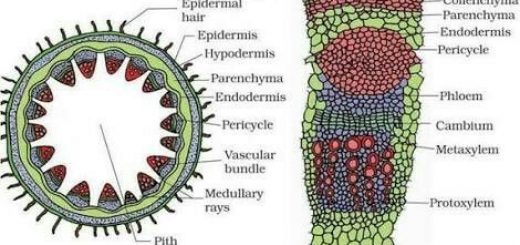Endocrine system, Endocrine glands, Pituitary gland and Hormonal coordination in living organisms
Endocrine system is the second system after the nervous system that controls the body functions, So, all the body functions are under the nervous and hormonal control, Endocrine glands are ductless glands that secrete their hormones directly into the bloodstream with very small amounts to perform their functions.
Hormones
They are organic chemical substances that are synthesized inside the endocrine glands and secreted directly into the blood which transports them to another organ, where they affect the functions, growth & source of nutrition of this organ.
Hormones are secreted in a small define amount to perform their functions perfectly, where any increase or decrease in the amount of secretion of any hormone leads to a disturbance in the function of body organs and results in pathological changes and symptoms that are characteristic for each hormone, Most of the effects of hormones are in the form of stimulation, where it stimulates organs or other glands.
Hormones in plants (Auxins)
Plants have no special glands to secrete hormones as in animals, but the hormones of plants (auxins) are secreted by special plant cells, Boyson Jensen in 1913 was considered the first scientist who referred to the auxins (plant hormones) and explained their role in phototropism of a growing point (stem).
He proved that the tip of coleoptile (receptor site) secretes a chemical substance “indole acetic acid” which is transmitted to the responding site (the site of curvature), causing its bend.
Auxins are chemical substances that secreted from the tips of coleoptiles and buds and affect on the functions of other parts of the plant, They are secreted from the tips of coleoptiles and buds, because the plant has no special glands to secrete auxins, Auxins affect on the functions of different parts of the plant, where they:
- Regulate the plant growth.
- Organize the development of tissues.
- Regulate the formation of flowers, leaf falling and fruit ripeness and falling.
- Affect on the functions of all plant tissues.
Discovery of animals hormones
Cloud Bernard: He studied the liver functions in 1855, He considered the stored sugar inside the liver as its internal secretion and the bile as its external secretion.
Starling: In 1905, He found that the pancreas secretes pancreatic juice directly after the arrival of food from the stomach to the duodenum, even after the cutting of nerve supply between the pancreas and the other organs.
He concluded that there must be a non nervous stimulation, He discovered that the mucous membrane that lines the duodenum secretes certain chemical substances (chemical messages) which pass into the bloodstream to stimulate the pancreas to secrete its pancreatic juice, He named these chemical messages by hormones (a Greek word which means activators).
Scientific studies: By the help of recent scientific studies, scientists were able to know the endocrine glands in the human body and the hormones of each gland.
Hormonal coordination in man
The scientists were able to know the functions of hormones through:
- The study of symptoms that appear on the human or animal, due to the enlargement or removal of one of the endocrine glands.
- The study of the chemical structure of endocrine gland extracts and their effects on the different vital activities.
Characteristics of hormones
Hormones are organic substances, where some of them are made up of complex proteins and others are made up of simple components such as amino acids or steroids (lipid derivatives), Hormones are secreted in very small amounts that are estimated by micrograms (1/1000 milligram).
Hormones perform the following important functions:
- Keep the balance of the internal environment of the body (Homeostasis).
- Body growth.
- Sexual maturity.
- Metabolism (Utilization of food through anabolism and catabolism processes).
- Human behaviour, emotional and intellectual development.
Types of glands in man
There are three types of glands that present in human body which are:
- Exocrine glands: Glands with external secretions that consist of a secretory part in addition to a duct or a system of ducts which carries the secretions either to a cavity inside the body such as the salivary glands and other digestive glands or outside the body such as the sweat glands.
- Endocrine glands: They are ductless glands with internal secretions that secrete their hormones directly into the blood stream, such as the pituitary gland, thyroid gland and adrenal gland.
- Mixed glands: They are glands that gather between the exocrine and endocrine glands, where they consist of a duct glandular part and another ductless glandular part, such as the pancreas.
The human body contains a group of endocrine glands which are distributed in different places in the body and each of them has its own secretion that contains one hormone or a group of hormones:
Endocrine glands in man
Pituitary gland :
- Adenohypophysis part secretes growth hormone (GH) and pituitary tropic hormones (Thyroid stimulating hormone (TSH), Adrenocorticotropic hormone (ACTH), Gonadotropic hormones FSH and LH, Prolactin).
- Neurohypophysis part secretes Antidiuretic hormone (ADH) and Oxytocin hormone.
Thyroid gland: secretes Thyroxine hormone and calcitonin hormone.
Parathyroid gland: secretes parathormone hormone.
- Cortex: Glucocorticoids (Cortisone hormone, Corticosterone hormone), Mineralocorticoids (Aldosterone hormone), Sex hormones.
- Medulla: Adrenaline hormone and Noradrenaline hormone.
Pancreas (Islets of Langerhans): Alpha cells (Glucagon hormone), Beta cells (Insulin hormone).
Sex glands: Testis (Testosterone hormone, Androsterne hormone), Ovary (Oestrogen hormone, Progesterone hormone).
Gastrointestinal glands: Stomach (Gastrin hormone), Small intestine (Secretin hormone, Cholecystokinin hormone).
Pituitary gland
It is considered as the master gland because it controls the endocrine system through the hormones that are secreted by it and affects the functions and secretions of most endocrine glands, It is located beneath the brain and connected with the hypothalamus.
The pituitary gland consists of two parts which are:
- Adenohypophysis part: consists of the anterior and middle lobes.
- Neurohypophysis part: consists of the posterior lobe and a part of the brain called the infundibulum (a stalk connects the pituitary gland with the brain).
Hormones of the Adenohypophysis part
Growth hormone (GH)
It controls the metabolism especially the protein synthesis, accordingly, it controls the physical growth of the body, The hypersecretion or hyposecretion of this hormone causes a disease that depends on the age of the patient:
During childhood: Hypersecretion causes gigantism, and Hyposecretion causes dwarfism.
In adults: Hypersecretion causes acromegaly cases that are characterized by the increase of bone growth at the extremities (enlarged hands, feet and fingers) and enlargement of facial bones.
Pituitary tropic hormones
A group of hormones that affect on the activity and secretion of some of the other endocrine glands and includes:
- Thyrotropin: thyroid stimulating hormone (TSH).
- Adrenocorticotropic hormone (ACTH): affects on the function of the adrenal (suprarenal) cortex.
- Prolactin hormone: stimulates the milk secretion from the mammary glands.
- Gonadotropic hormones: affect on the functions of gonads (ovaries in females and testes in males) which include the following:
Follicle stimulating hormone (FSH): It stimulates the growth of the ovarian follicles and formation of Graafian follicles in female, It helps in the formation of seminiferous tubules and spermatozoa in male.
Luteinizing hormone (LH): It stimulates the formation of the corpus luteum in female, It is responsible for the formation and secretion of the interstitial cells in the testis in male, The hormones (FSH) and (LH) are important for individual sexual maturity.
Hormones of the neurohypophysis part
The hormones of the neurohypophysis part are secreted from the nerve cells that are present in the hypothalamus of the brain which are called the neuro-secretory cells.
Neuro-secretory cells are nerve cells that are present in the hypothalamus region of the brain and secrete the hormones of the neurohypophysis part of the pituitary gland, where these hormones reach the posterior lobe of the pituitary gland.
These secreted hormones reach the posterior lobe of the pituitary gland through the infundibulum and they include the following hormones:
Antidiuretic hormone (Vasopressin hormone) ADH
This hormone increases the reabsorption of water from the kidney nephrons and decreases the amount of urine excreted and it increases the blood pressure.
Oxytocin hormone
There is a direct relation between this hormone and regulation of uterine contractions, where it increases them strongly during delivery (labour), so, gynecologists use this hormone to accelerate the birth of the baby by stimulating strong contractions of the uterine muscles, It stimulates the release of milk from mammary glands after the delivery process as a response to the lactation (milk letting hormone).
Endocrine glands and the most important pituitary glands in the human body
Thyroid gland, Diseases of thyroid gland & Function of Parathyroid glands
Adrenal (suprarenal) glands, Pancreas & Sex glands (Gonads)
Regulation of Growth Hormone Secretion & Effects of Deficiency of Anterior Pituitary Hormones



